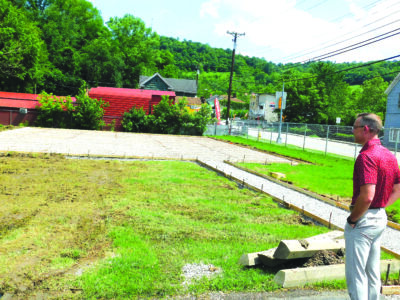Gas and oil industry pays millions in property taxes
Increased production leads to more revenue for eight Ohio counties
The drilling rigs, heavy equipment and high pressure fracking operations grinding away across Eastern Ohio are producing more than natural gas, oil and related products — they are also churning out millions of dollars in property tax revenues paid directly to local schools and communities.
According to the Ohio Oil and Gas Association and Energy In Depth, the industry paid $141.9 million in real estate property taxes in eight Buckeye State counties between 2010 and 2017. The two entities released an updated version of The Utica Shale Local Support Series report on Wednesday. It shows significant increases in gas and oil production and in the resulting tax revenues.
A previous version of the report released in 2017 focused on just six counties and showed that $45 million was paid in those six counties from 2010-2015. The “2019 Update: Ohio’s Oil and Gas Industry Property Tax Payments” includes two additional counties where production has picked up and tripled the amount of property tax revenue. The data used to formulate the report was collected from the Ohio Department of Natural Resources and from the auditors of Belmont, Carroll, Columbiana, Guernsey, Harrison, Jefferson, Monroe and Noble counties via Freedom of Information Act requests.
OOGA is a trade association with more than 2,200 members involved in all aspects of the industry. Energy In Depth is a research, education and public outreach campaign started by the Independent Petroleum Association of America in 2019.
In the new report, Belmont County leads the way with the largest increase in production and the greatest growth in property tax revenue payments. The amount collected there more than doubled from over $4 million in 2016 to more than $8 million in 2017. Monroe County also experienced steep increases, with tax revenues jumping from more than $5 million in 2016 to just over $7 million in 2017. A similar scenario played out in Jefferson County, where property tax payments climbed from $374,967,000 in 2016 to $1,251,000 in 2017. Harrison County, however, experienced a decline from $17,305,000 in property tax revenues in 2016 to $12,469,000 in 2017.
In Ohio, natural gas and oil production is taxed in the same way as other “real property,” such as a private residence. The Ohio Department of Taxation and ODNR work together to determine the taxable value of oil and gas production. As production ramps up, so does that value. Because horizontal wells can span multiple taxing districts’ a complex formula is used to determine the taxable value of the production in each district. The compiled information is then provided to county auditors, who then use the data to apportion collections according to individual levies that have been approved by voters. The process takes 18-24 months, so property taxes are collected in arrears in two installments per year.
In most cases, 60 percent to 70 percent of the property taxes collected benefit local school districts, depending on levies that are in place. Regardless of the portion that goes to the schools, however, 100 percent of the proceeds are returned to local governments, including counties, townships and municipalities. The funds are then used for purposes such as infrastructure and road repairs and to support law enforcement, senior centers and other local initiatives.
“The methodology of the report demonstrates the pure value of these revenue streams for these communities,” Dan Alfaro, EID spokesman, said in a press release announcing the new report. “These figures are not hypothetical — they show completed payments that are ‘in the bank’ of each of these counties.”
In a conference call on the topic, Alfaro added that previous projections that estimated the industry would generate $200-$250 million in property tax revenue for the region by 2026 are “very conservative” figures, based on the data available today.
Jefferson County Auditor E.J. Conn also participated in the news release and phone conference, remarking on ways that the tax revenue is benefiting his county.
“The ad valorem tax revenues we have seen in Jefferson County are making a real and positive impact to our community,” he states. “We are seeing increased activity, which is bringing in increased revenue, allowing those dollars to be put to work improving our area for future generations.”
Conn explained that while drilling has been taking place in the county for some time, the infrastructure necessary to get the resulting products to market was lacking, As that infrastructure has been built, values — and tax dollars — have increased. In addition, he said the revenue is helping to replace money lost as other local industries, such as coal and steel, have declined.
“Over the last few years, due to record production, we have seen the oil and gas ad valorem tax payments our industry pays turn into new school and community buildings … sheriff’s deputies being kept on patrol, and more resources being put to use to enhance the quality of life across southeast Ohio,” said Matt Hammond, executive vice president, Ohio Oil and Gas Association. “These dollars are just one of the many direct ways our industry is honoring our commitment to be a partner with the areas we operate in. Simply put, these are dollars that are generated locally, that stay local.”





